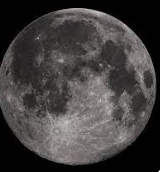The moon, Earth’s natural satellite, has fascinated humanity for centuries with its mysterious allure and mesmerizing beauty. Understanding the distance between the moon and Earth is essential for space exploration, scientific research, and even cultural curiosity. In this article, we’ll delve into the fascinating topic of how far the moon is from Earth, shedding light on this celestial marvel.
1. Average Distance:
The average distance between the moon and Earth is approximately 384,400 kilometers (238,900 miles). This distance varies slightly due to the moon’s elliptical orbit around Earth, with its closest approach (perigee) being around 363,300 kilometers (225,623 miles) and its farthest point (apogee) reaching up to about 405,500 kilometers (252,088 miles). Despite these variations, the average distance serves as a standard reference point for measuring the moon’s proximity to Earth.
2. Measurement Methods:
Determining the precise distance between the moon and Earth involves sophisticated measurement techniques and astronomical observations. Historically, methods such as parallax measurements, radar ranging, and lunar laser ranging have been utilized to calculate the moon’s distance with increasing accuracy. Parallax measurements involve observing the moon’s position relative to distant background stars from different locations on Earth, while radar ranging and lunar laser ranging use radar signals and laser beams, respectively, to measure the time it takes for the signal to travel to the moon and back.
3. Impact of Distance on Lunar Exploration:
The distance between the moon and Earth significantly influences lunar exploration missions and space travel endeavors. Traveling to the moon requires careful planning and precise calculations to navigate the vast expanse of space effectively. The distance also affects communication between Earth and lunar spacecraft, as signals must travel back and forth over considerable distances, leading to communication delays known as signal latency. Understanding these factors is crucial for the success of manned and unmanned missions to the moon and beyond.
4. Cultural Significance:
Beyond its scientific implications, the distance between the moon and Earth holds profound cultural significance for humanity. The moon has been a source of inspiration and wonder in various cultures throughout history, serving as a symbol of mystique, romance, and exploration. From ancient myths and folklore to modern literature and art, the moon’s enigmatic presence continues to captivate the human imagination, enriching our collective consciousness with its timeless allure.
5. Future Exploration and Research:
As technology advances and space exploration capabilities evolve, scientists and researchers are poised to delve deeper into the mysteries of the moon and expand our understanding of its origin, composition, and potential for exploration. Future missions, such as NASA’s Artemis program and international collaborations, aim to return humans to the moon’s surface and establish sustainable lunar habitats. By leveraging innovative technologies and collaborative efforts, humanity is poised to embark on a new era of lunar exploration, unlocking the secrets of our celestial neighbor and paving the way for future endeavors in space.
Conclusion:
The distance between the moon and Earth serves as a fundamental parameter in understanding our place in the cosmos and shaping the trajectory of space exploration. From its average distance of approximately 384,400 kilometers to its impact on lunar missions, cultural significance, and prospects for future research, the moon’s distance embodies the spirit of curiosity, discovery, and adventure that propels humanity toward the stars. As we continue to gaze at the moonlit sky with wonder and awe, let us marvel at the vastness of space and the boundless possibilities that lie beyond our terrestrial realm.
